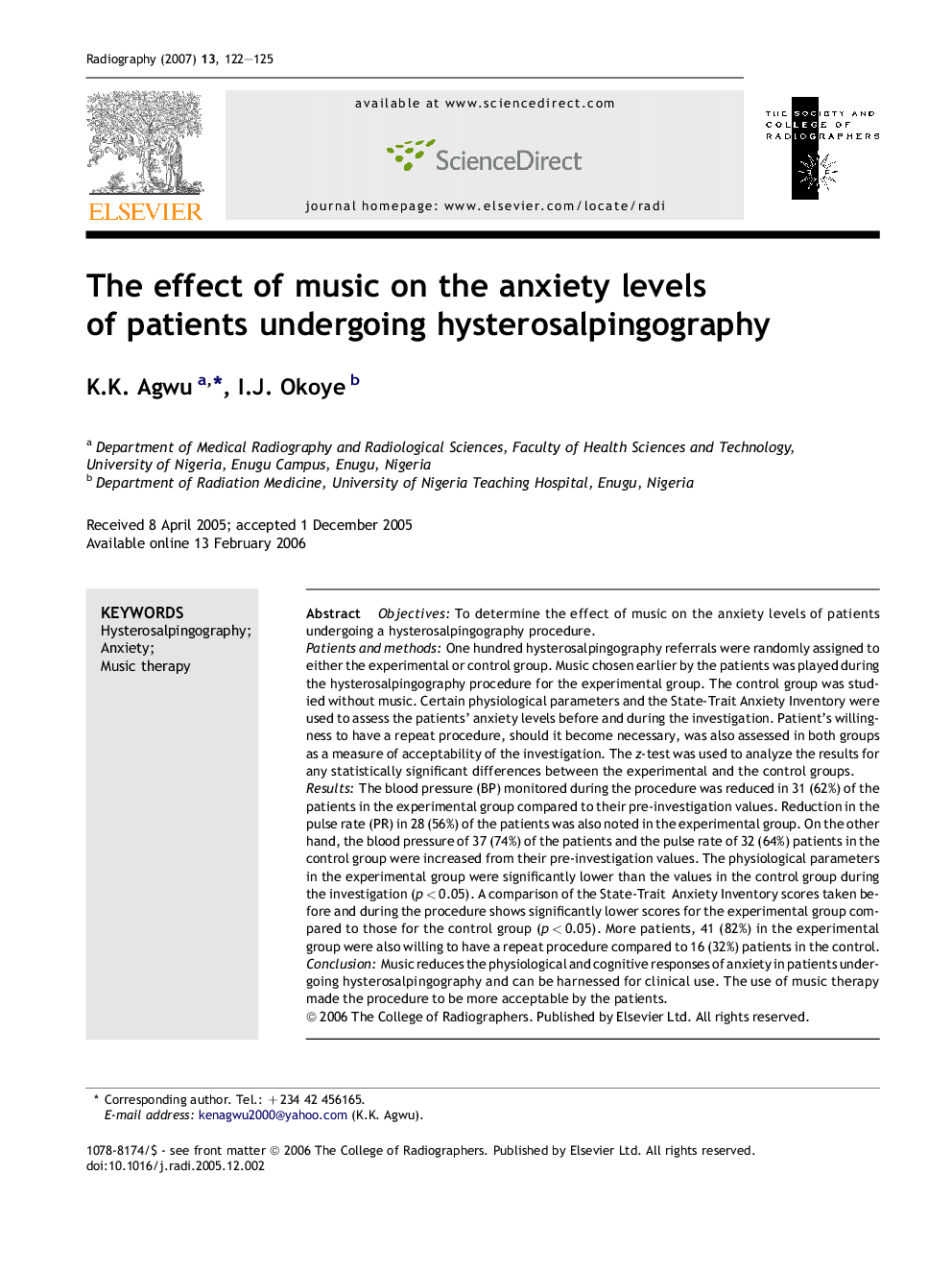| Article ID | Journal | Published Year | Pages | File Type |
|---|---|---|---|---|
| 2735267 | Radiography | 2007 | 4 Pages |
ObjectivesTo determine the effect of music on the anxiety levels of patients undergoing a hysterosalpingography procedure.Patients and methodsOne hundred hysterosalpingography referrals were randomly assigned to either the experimental or control group. Music chosen earlier by the patients was played during the hysterosalpingography procedure for the experimental group. The control group was studied without music. Certain physiological parameters and the State-Trait Anxiety Inventory were used to assess the patients' anxiety levels before and during the investigation. Patient's willingness to have a repeat procedure, should it become necessary, was also assessed in both groups as a measure of acceptability of the investigation. The z-test was used to analyze the results for any statistically significant differences between the experimental and the control groups.ResultsThe blood pressure (BP) monitored during the procedure was reduced in 31 (62%) of the patients in the experimental group compared to their pre-investigation values. Reduction in the pulse rate (PR) in 28 (56%) of the patients was also noted in the experimental group. On the other hand, the blood pressure of 37 (74%) of the patients and the pulse rate of 32 (64%) patients in the control group were increased from their pre-investigation values. The physiological parameters in the experimental group were significantly lower than the values in the control group during the investigation (p < 0.05). A comparison of the State-Trait Anxiety Inventory scores taken before and during the procedure shows significantly lower scores for the experimental group compared to those for the control group (p < 0.05). More patients, 41 (82%) in the experimental group were also willing to have a repeat procedure compared to 16 (32%) patients in the control.ConclusionMusic reduces the physiological and cognitive responses of anxiety in patients undergoing hysterosalpingography and can be harnessed for clinical use. The use of music therapy made the procedure to be more acceptable by the patients.
